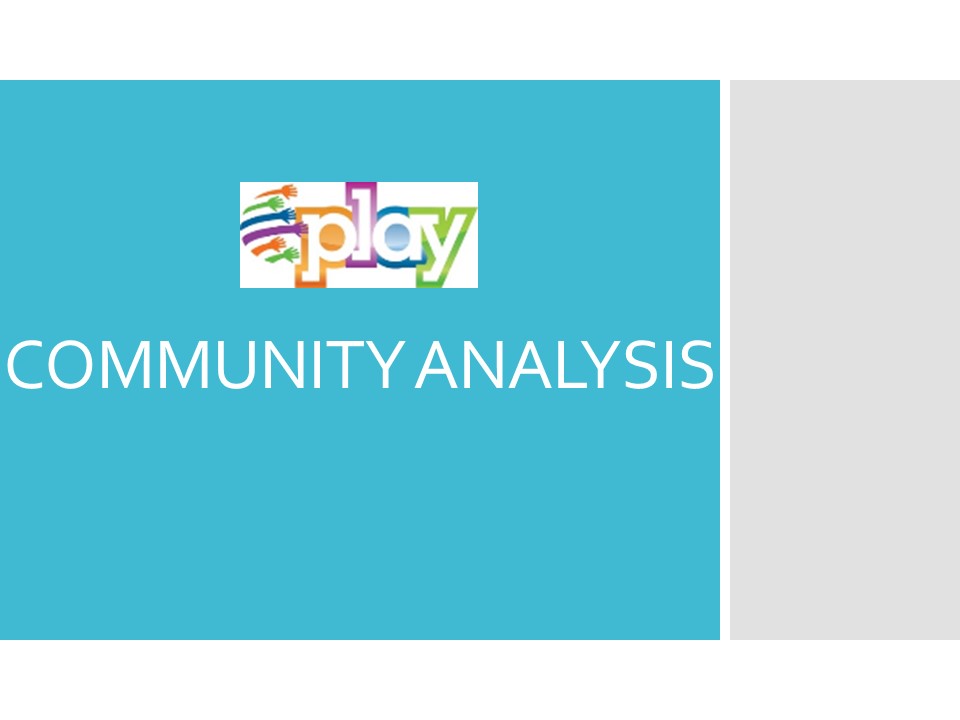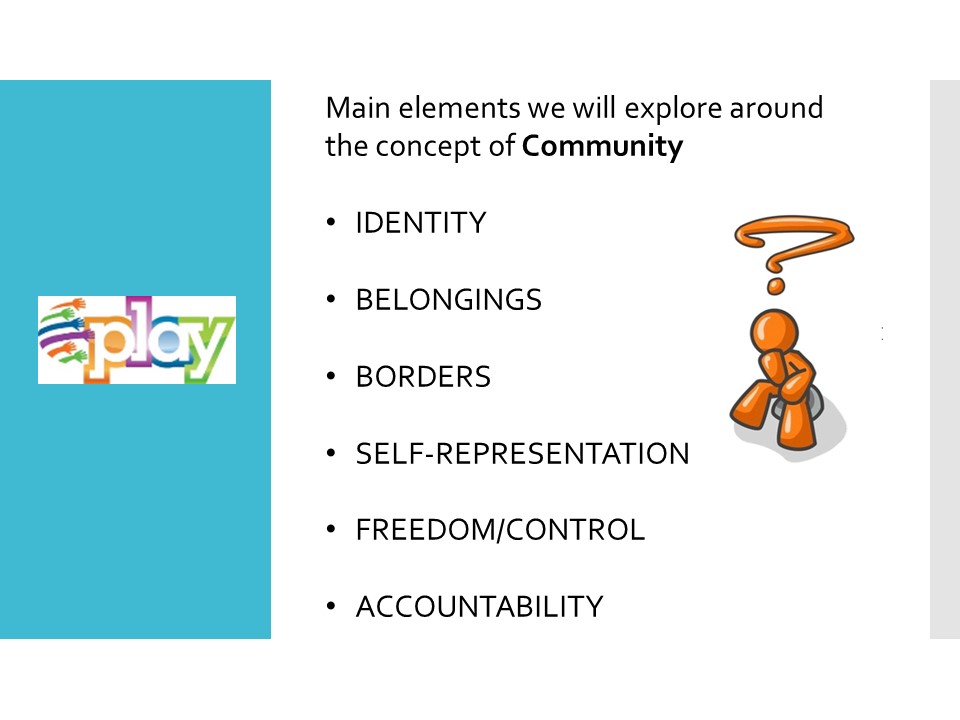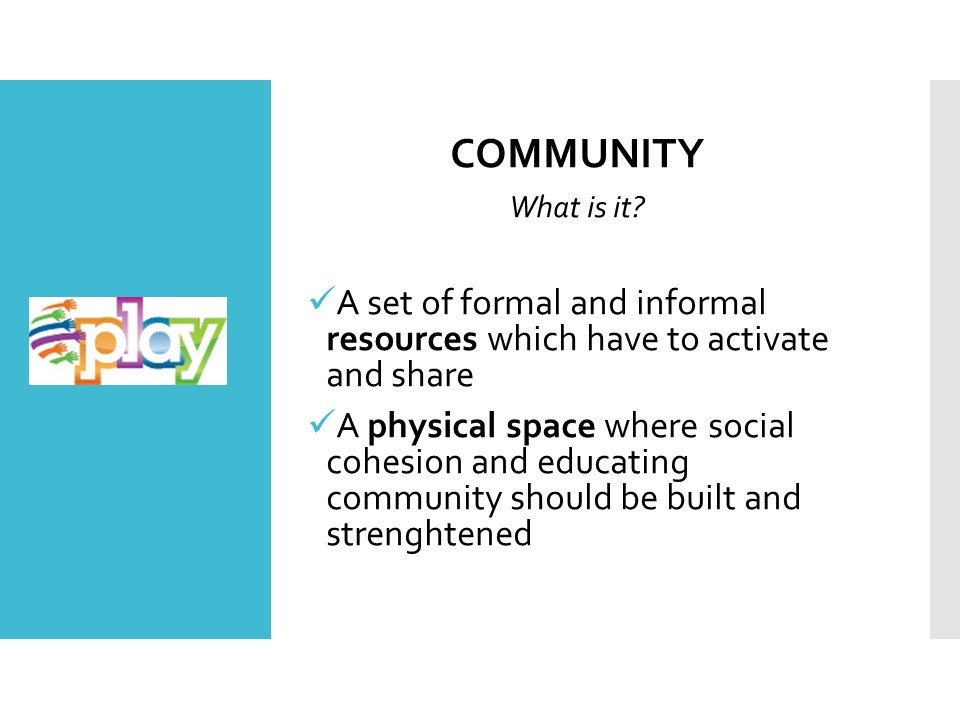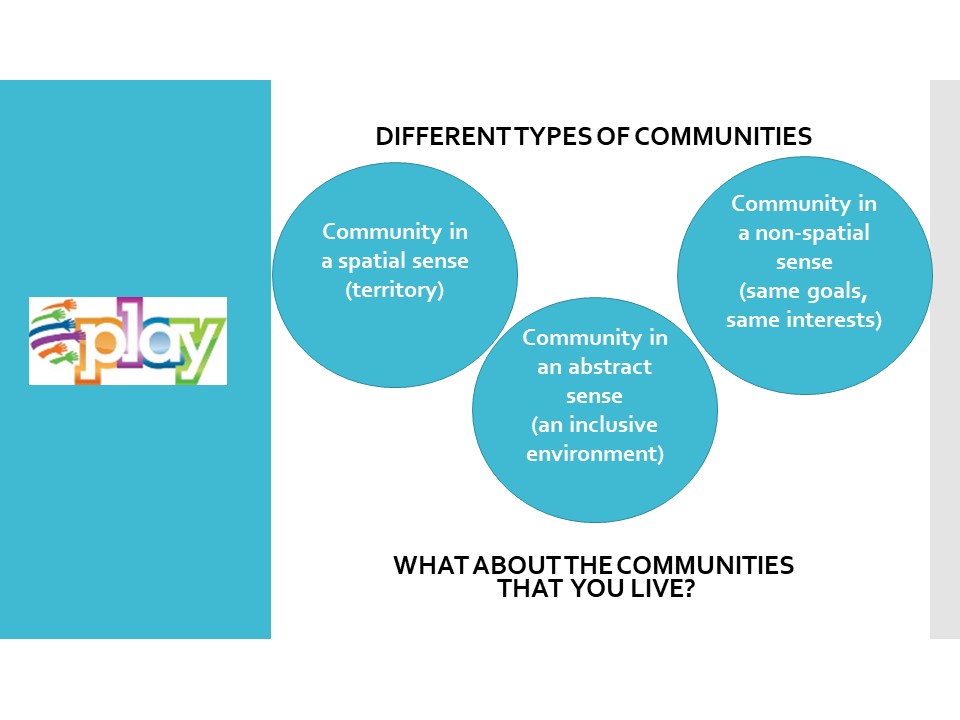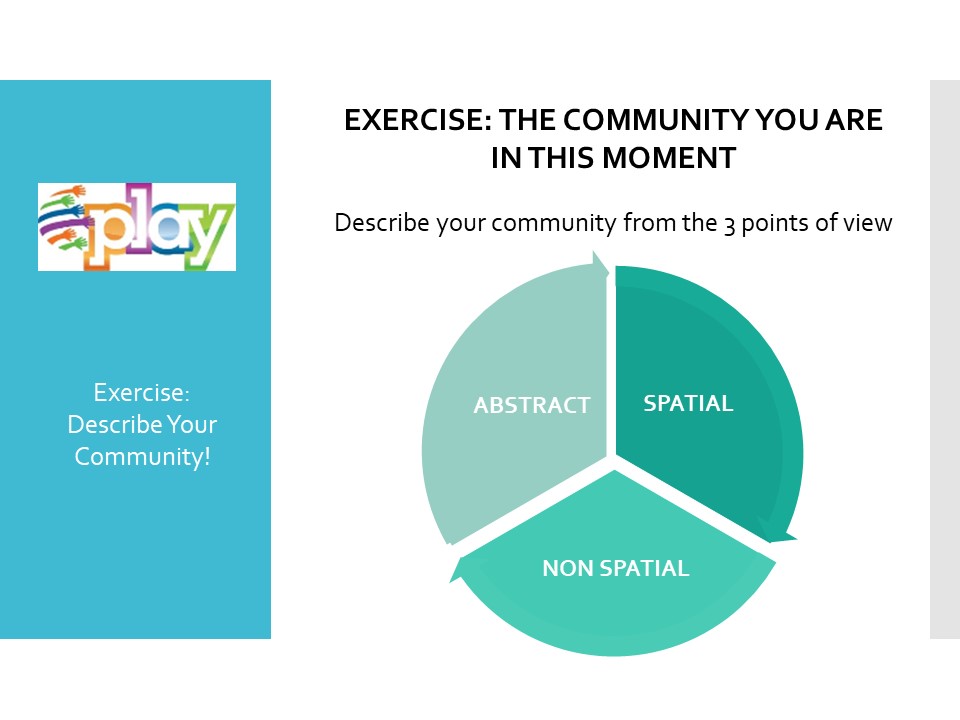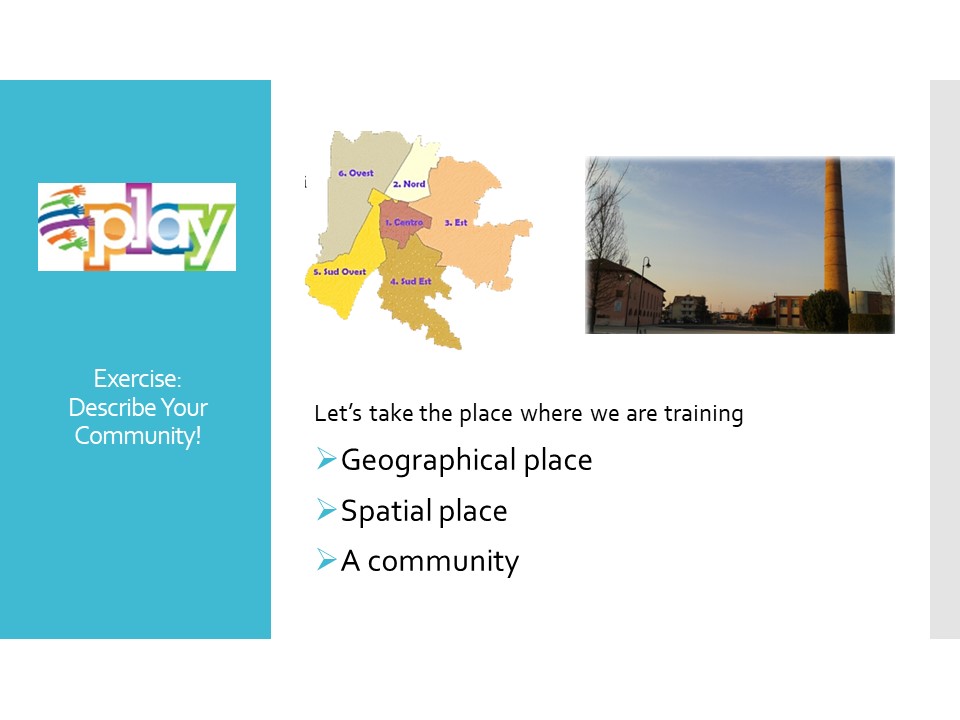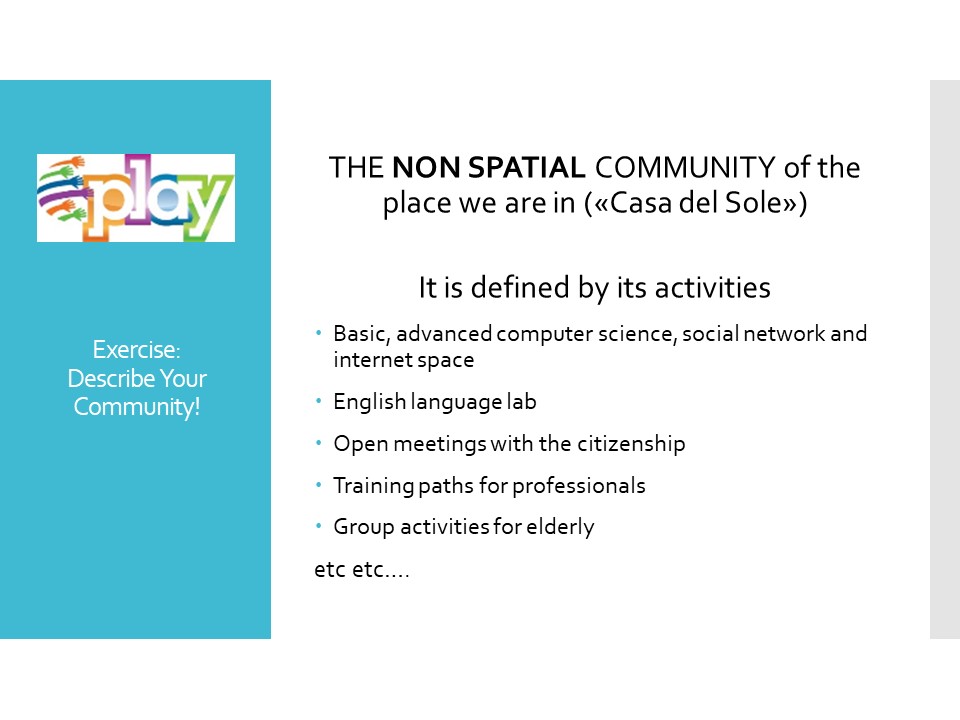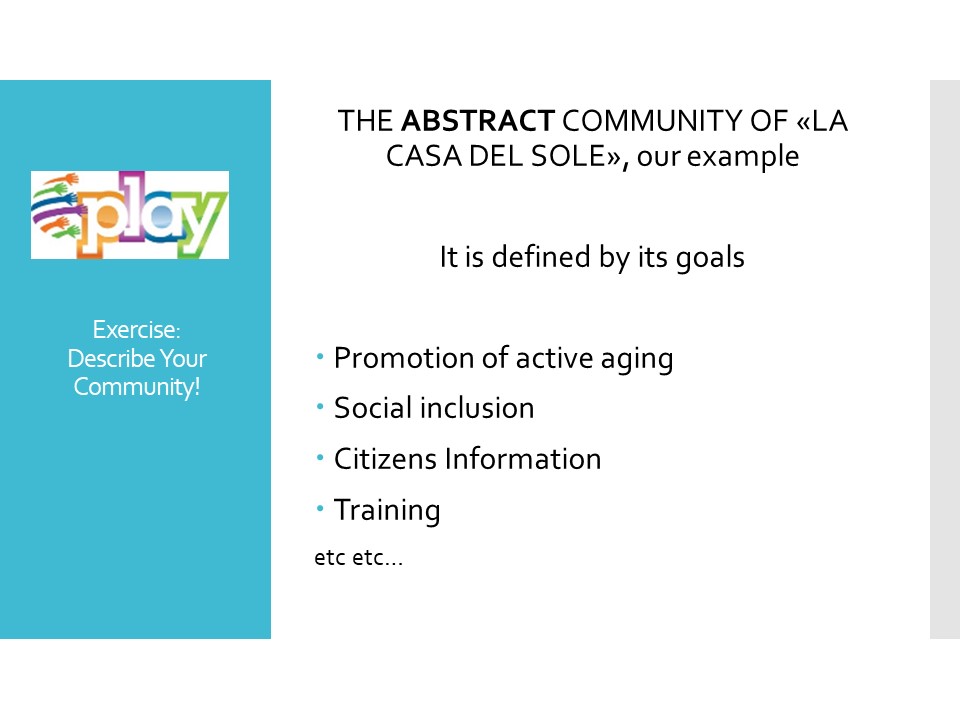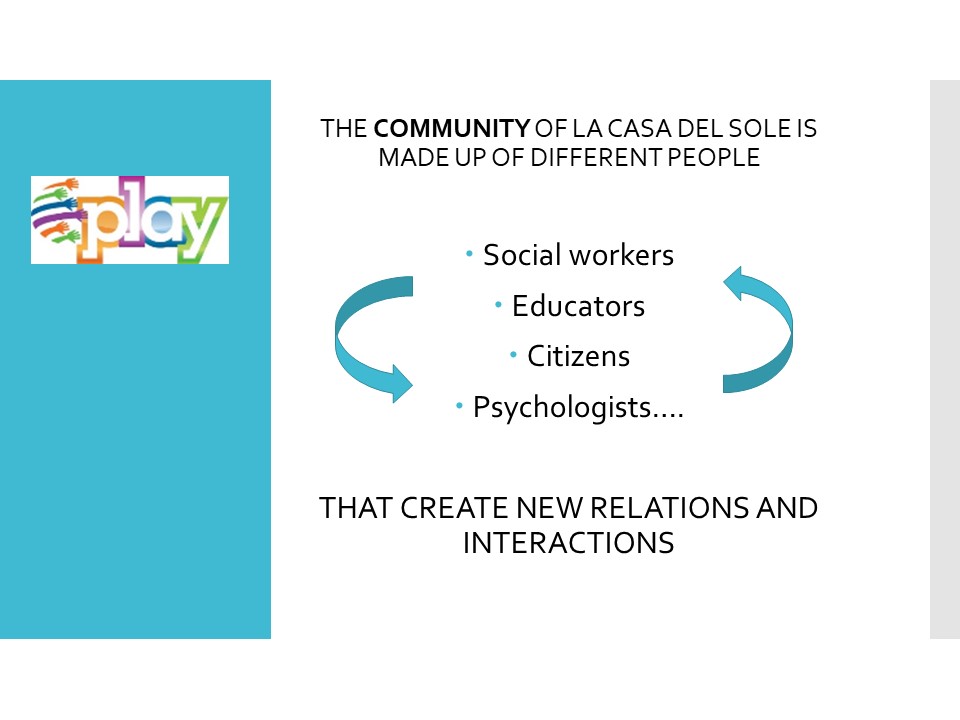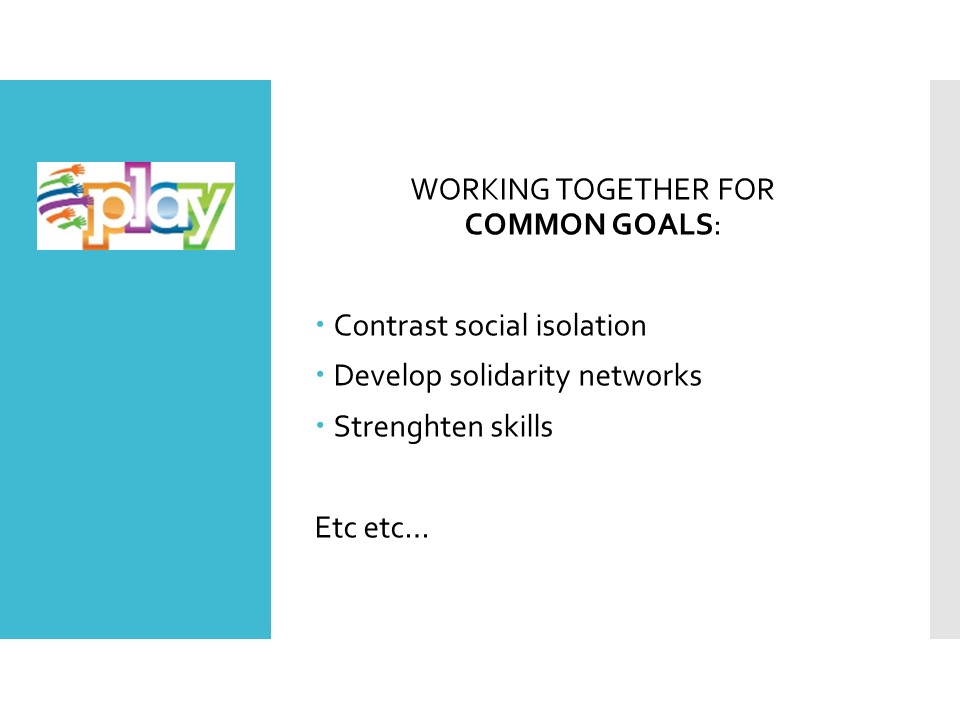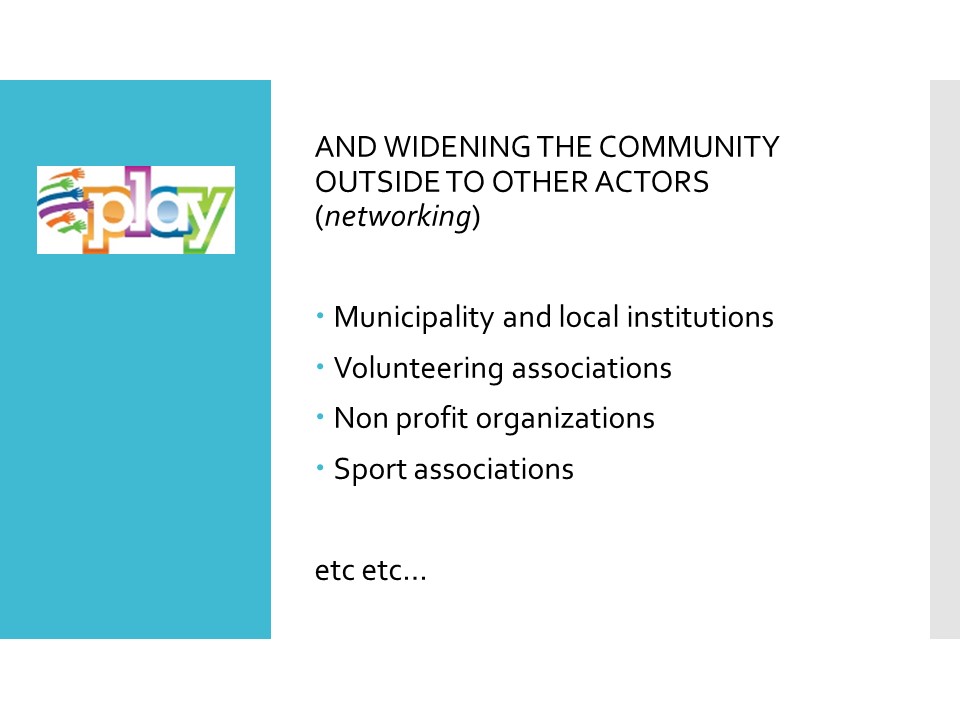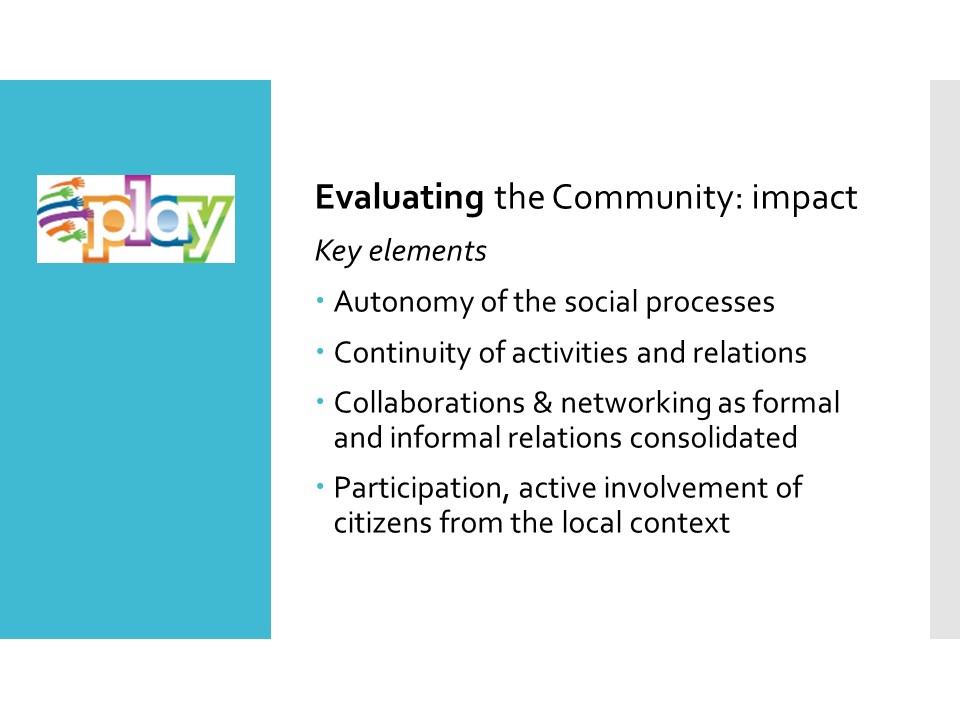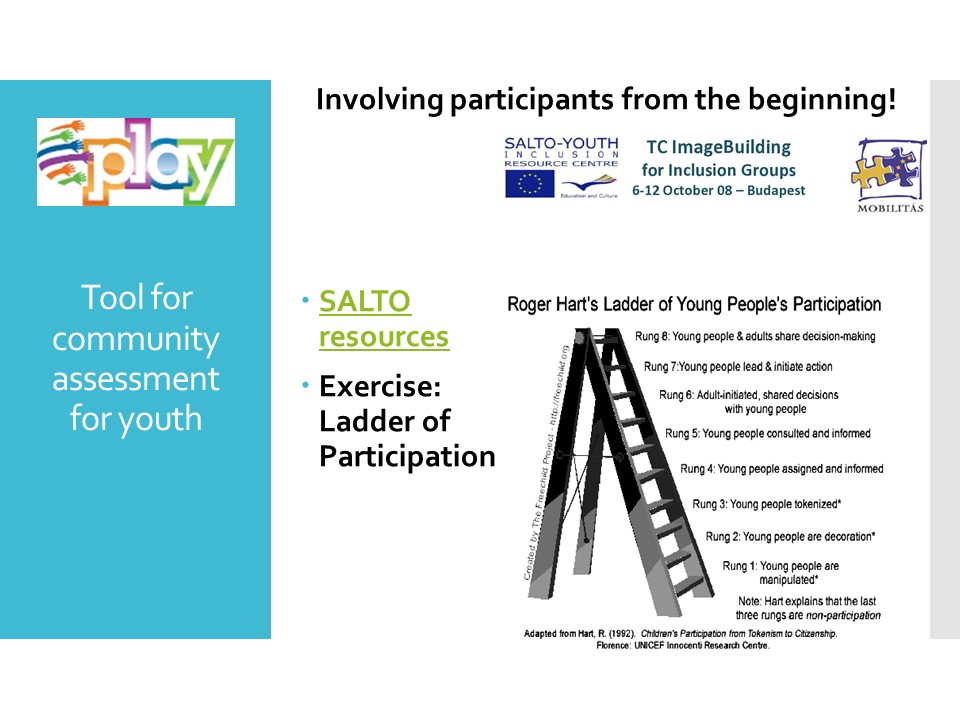Community Analysis
DESCRIPTION OF THE LEARNING UNIT
This Learning Unit aims at providing young people and volunteers an overview of the different meaning of community, different aspects that contribute to build a community. Learners will explore this concept starting from their own context, analysing a local community and learn how to break it down and re-build it in order to acquire awareness of the different aspects that contribute to its creation and development.
Main topics:
- Community as a concept
- Different types of communities
- Analysis of a community
- Exercise: ladder of participation
Learning Outcomes:
- basic key concept of community
- self-awareness about control and borders
- skill set to analyse a community
- practical exercise for community analysis and youth participation
Keywords:
- Identity
- Belongings
- Borders
- Self-representation
- Freedom/control
How to follow this learning unit?
- Read the learning materials of this topic by clicking open the title banners
- Try the exercises proposed in the unit and widen your knowledge by checking the background reading materials
Background reading materials (optional):
- Blyth, D. & Roehlkepartain E. (1993). Healthy community, healthy youth: How communities contribute to positive youth development. Search Institute: Minneapolis, Minn.
- Carnegie Council on Adolescent Development (1992). A matter of time: Risks and opportunity in the non-school hours, Carnegie Corporation of New York: New York.
- Pittman, K. & Wright, M. (1991). A rationale for enhancing the role of non-school voluntary sector in youth development. Unpublished manuscript prepared for the Carnegie Council on Adolescent Development, Washington, D.C. ED364804
Preparation: needs assessment. SALTO resource
COMMUNITY ANALYSIS
To Community Analysis -presentation (preview below, NB: please use the presentation to be able to follow the links in the file )
